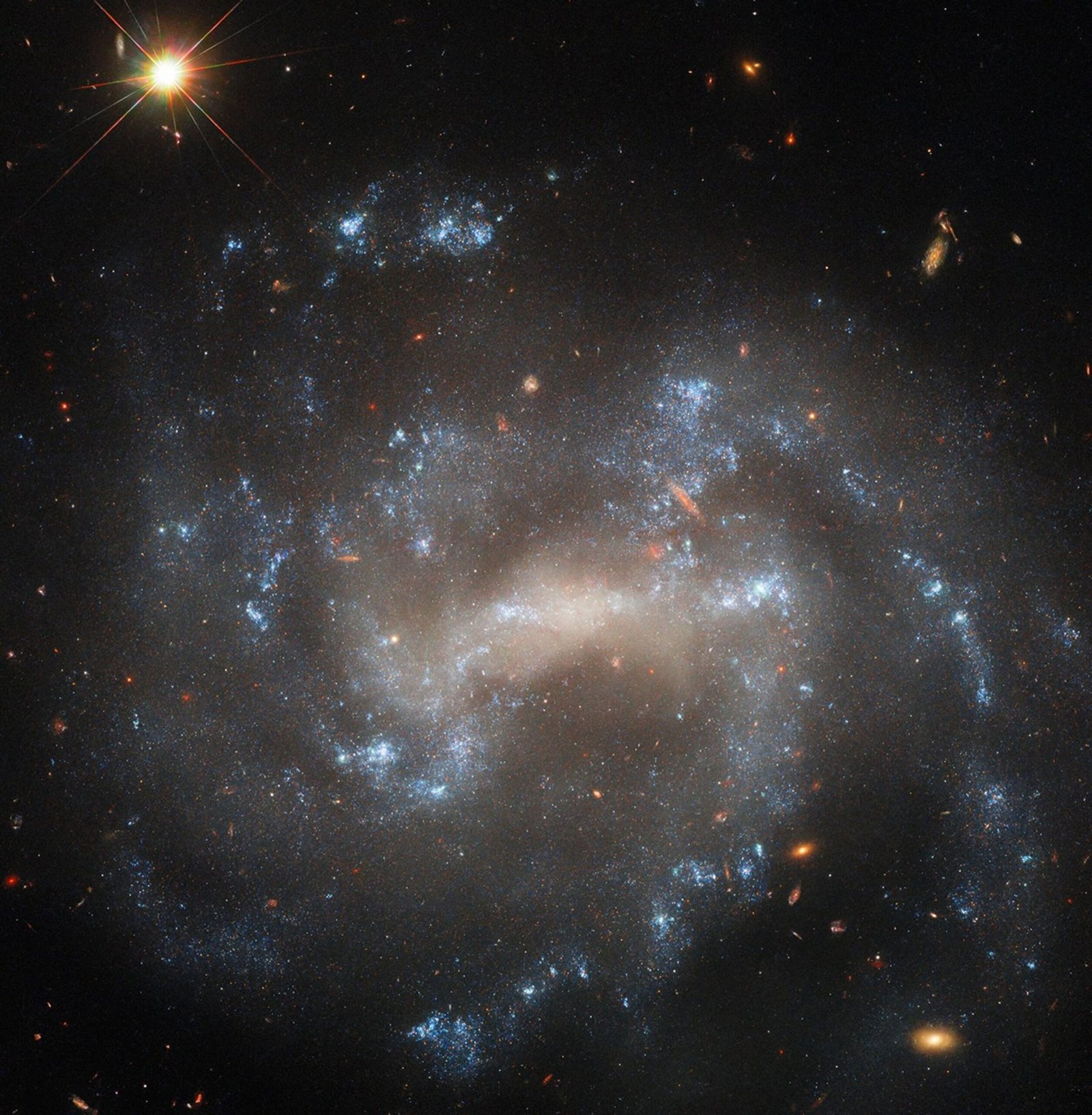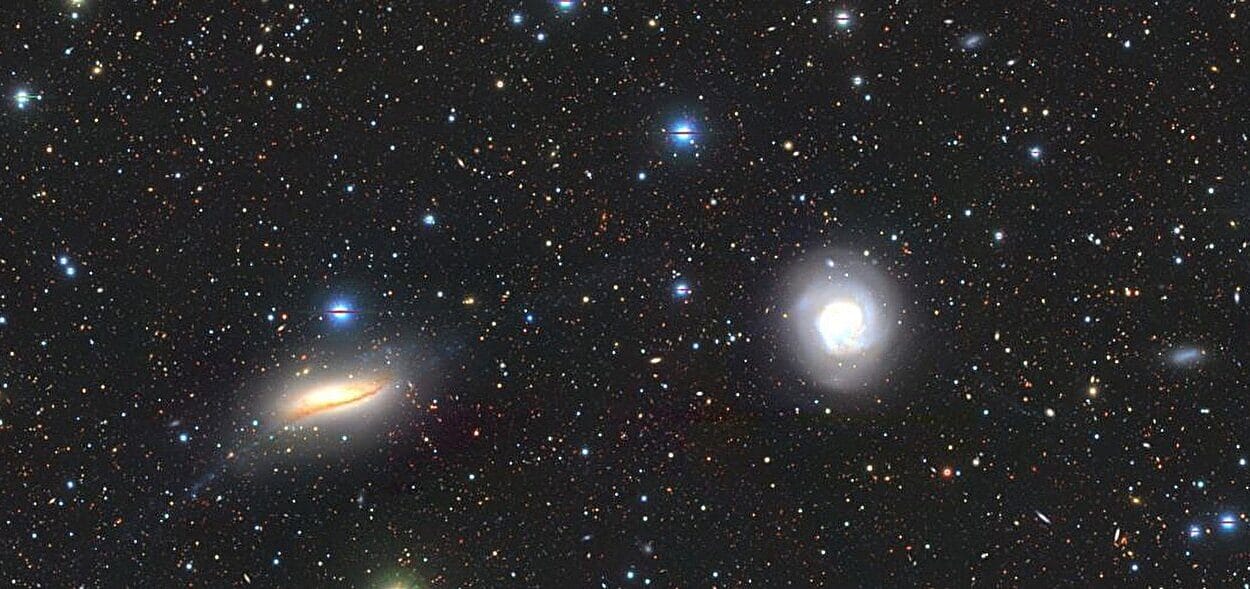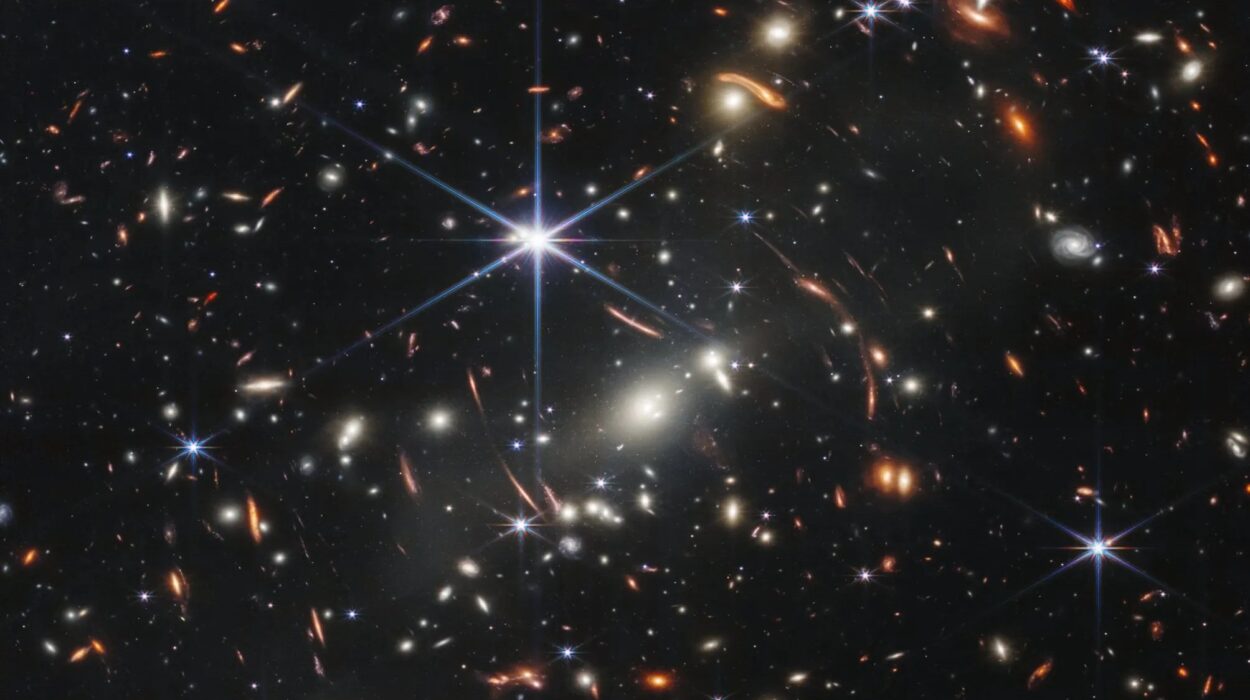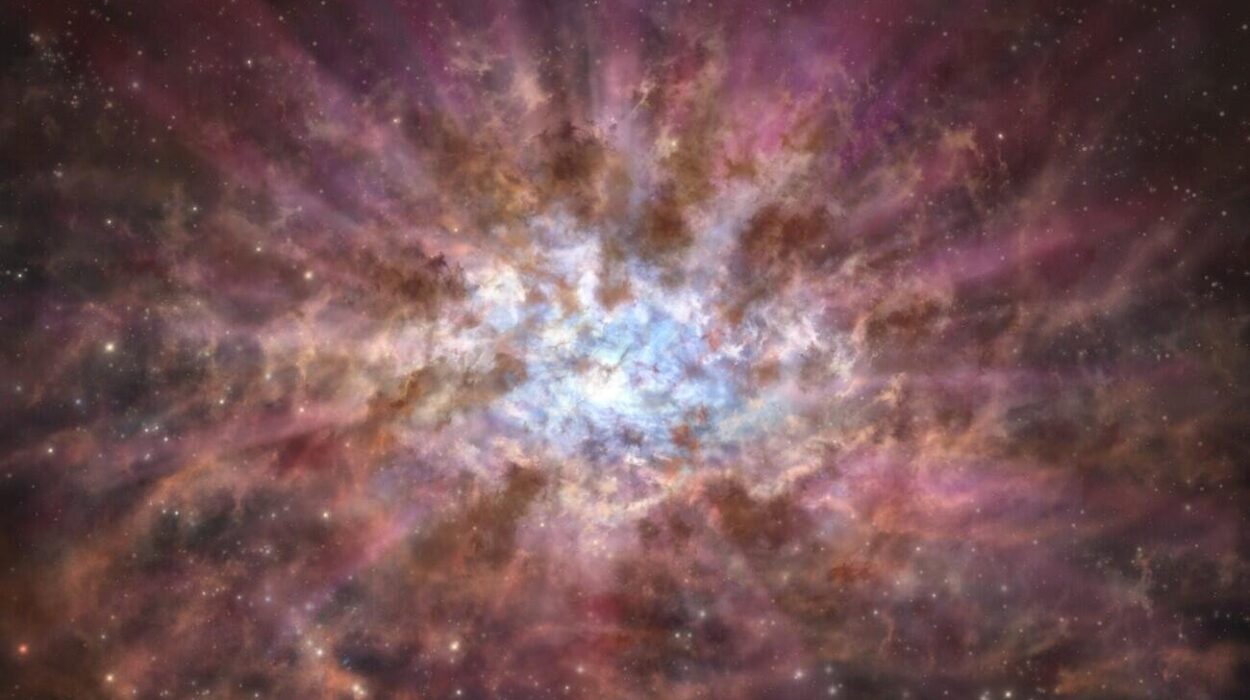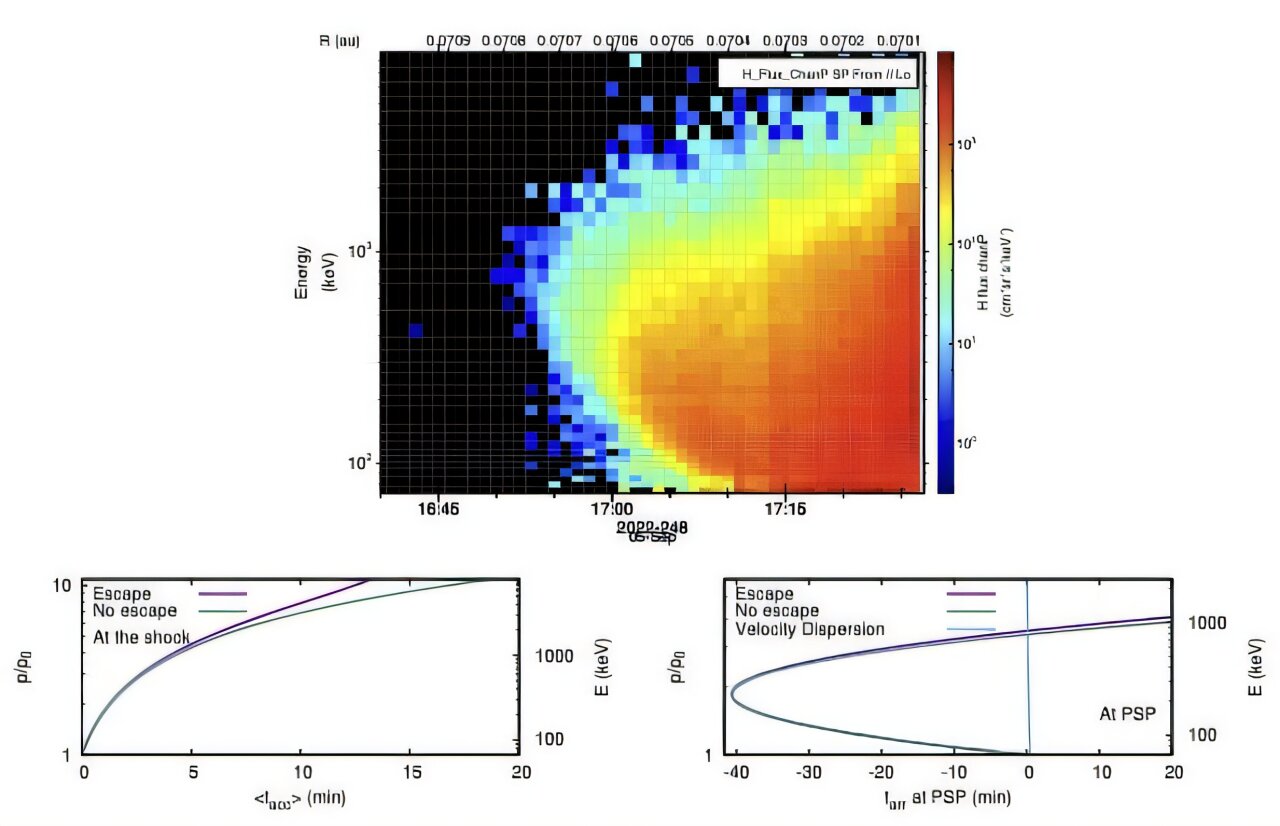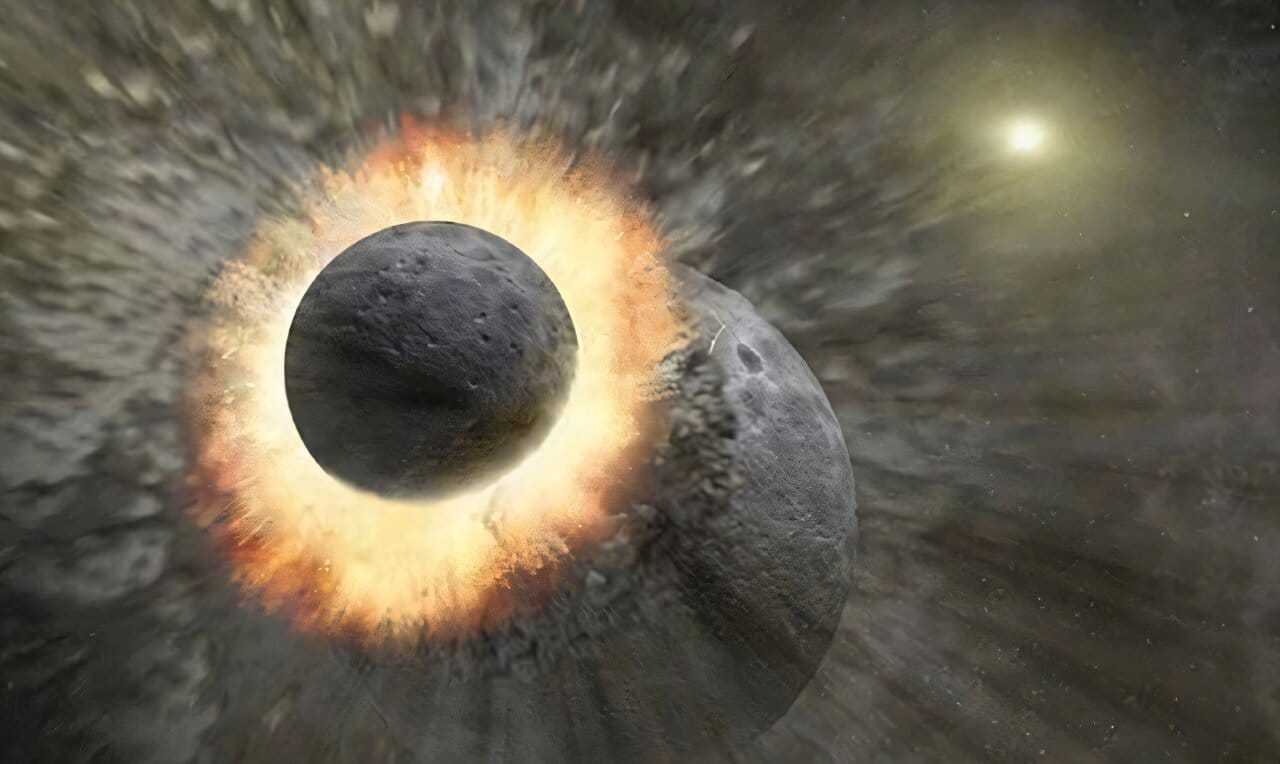The stunning spiral galaxy UGC 5460, captured in this breathtaking image from the NASA/ESA Hubble Space Telescope, is located approximately 60 million light-years away in the constellation Ursa Major. The image is a composite of four different wavelengths of light, revealing the galaxy’s intricate structure, which includes a prominent central bar of stars, its winding spiral arms, and clusters of bright blue stars. Additionally, in the upper left-hand corner of the image, a distant star from our own galaxy, only 577 light-years away, is visible.
UGC 5460 has been a significant focus of attention for astronomers due to its recent history of supernovae. Specifically, the galaxy has been the site of two notable supernova events: SN 2011ht and SN 2015as. These stellar explosions have prompted the Hubble Space Telescope to conduct multiple observation programs aimed at studying the various types of supernovae. Each supernova presents unique insights into the lifecycle of stars and the fundamental processes that govern the cosmos.
The Supernovae of UGC 5460: SN 2011ht and SN 2015as
SN 2015as: A Core-Collapse Supernova
The SN 2015as event was a core-collapse supernova, one of the most violent phenomena in the universe. These supernovae occur when the core of a massive star—several times the mass of the Sun—runs out of nuclear fuel. As the core collapses under its own gravity, it causes a dramatic explosion that blasts the outer layers of the star into space. The shockwave from this explosion accelerates outward, interacting with the surrounding interstellar gas and creating spectacular shock fronts.
Astronomers are particularly interested in studying the aftermath of such events. The Hubble Space Telescope is helping researchers understand how the expanding shockwave from SN 2015as interacts with the surrounding gas, a key factor in the evolution of galaxies. The data gathered by Hubble will enhance our knowledge of the physical processes involved in supernova explosions, including the impact of the shockwave on the interstellar medium, and how these explosions contribute to the chemical enrichment of galaxies by dispersing heavier elements like iron and oxygen into space.
SN 2011ht: A Stellar Mystery
The case of SN 2011ht is more mysterious. While it might have been a core-collapse supernova, it is equally possible that it was a luminous blue variable (LBV) star in a massive outburst. Luminous blue variables are rare, unstable stars that experience dramatic eruptions, shedding large amounts of material into space. These outbursts can be so massive that they resemble supernovae, but LBVs differ from true supernovae in one important way: while supernovae completely destroy their progenitor stars, LBVs survive their outbursts, emerging relatively unscathed.
The origin of SN 2011ht has puzzled astronomers because its eruption was so powerful that it initially appeared to be a supernova. However, unlike typical supernova remnants, no trace of a dead stellar core has been detected at its location. This has led some scientists to propose that SN 2011ht might actually be the result of a luminous blue variable experiencing an eruption of such magnitude that it mimicked a supernova.
To resolve this mystery, Hubble is closely monitoring the region of SN 2011ht to search for any stellar survivors. If a surviving star is found, it could reveal whether this event was a supernova or the eruption of an LBV, further refining our understanding of the different types of stellar explosions.
The Significance of Supernova Studies
Supernovae are among the most energetic and consequential events in the universe. These explosions not only mark the death of a star but also play a pivotal role in the evolution of galaxies. By studying supernovae like SN 2011ht and SN 2015as, astronomers can learn more about the mechanisms behind star death, the production of heavy elements, and the effects of these explosions on their surrounding environments. Supernovae also serve as cosmic “distance markers”, helping scientists measure the vast distances across the universe, and providing insights into the expansion of the universe itself.
The data collected by the Hubble Space Telescope will continue to be an invaluable resource for researchers, providing high-resolution images and spectral data that reveal the complex interactions between stars, their environments, and the explosive events they can trigger.
The Importance of Multi-Wavelength Observations
The Hubble Space Telescope’s ability to observe the universe in multiple wavelengths of light allows astronomers to study celestial objects in more detail than ever before. By combining data from infrared, visible, ultraviolet, and X-ray wavelengths, scientists can gather a complete picture of the physical properties of a galaxy, star, or supernova. In the case of UGC 5460, this multi-wavelength approach has enabled the detailed imaging of its spiral arms, star clusters, and the phenomena associated with its recent supernova events.
For instance, while visible light provides the sharpest images of the galaxy’s structure, other wavelengths such as infrared light can penetrate dust clouds and reveal hidden features, while ultraviolet light gives insight into the hottest regions of the galaxy, including star-forming regions and remnants of stellar explosions. The combined data paints a clearer picture of the galaxy’s composition and the life cycles of its stars.
Looking Forward: The Ongoing Study of UGC 5460
The study of UGC 5460 and its supernovae is far from complete. As Hubble continues to observe this galaxy, new insights will emerge that may change our understanding of stellar evolution and explosive astrophysical events. In addition, upcoming observatories and missions, such as the James Webb Space Telescope, will further complement these efforts, offering even more detailed observations of galaxies, supernovae, and the birth and death of stars.
The combined data from Hubble, future space telescopes, and ground-based observatories will help astronomers build a more comprehensive model of the universe’s dynamic processes, deepening our understanding of the origins of stars, galaxies, and the very elements that make up the universe.
Conclusion
The Hubble Space Telescope’s image of UGC 5460 is more than just a visually stunning photograph of a distant galaxy. It is a window into the intricate processes that shape the universe. The study of supernovae in UGC 5460, particularly SN 2015as and SN 2011ht, is providing invaluable insights into the explosive deaths of stars and their aftermath. Whether these events are the result of core-collapse supernovae or the outbursts of rare luminous blue variables, they offer a deeper understanding of stellar life cycles and their role in the broader cosmic narrative. As Hubble and future missions continue to monitor such phenomena, the mysteries of the universe will slowly begin to unravel, one supernova at a time.
